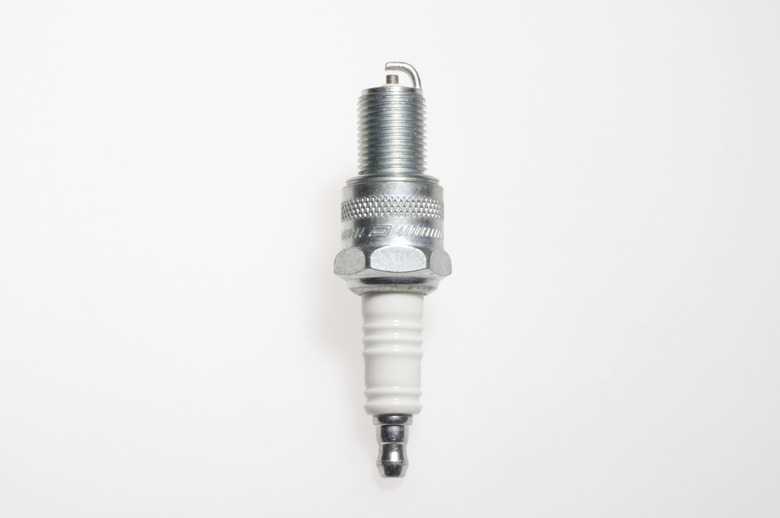How To Make Electricity From Radio Waves
Radio waves, both natural and man-made, contain electrical energy you can tap using simple solid-state hardware. Radio wave collectors use long, insulated copper wire antennas to drive current to a load-bearing device (cell phone charger, battery, light bulb). The electricity collected can be from a radio station or the Earth's own magnetosphere (our planet's magnetic field), depending on the length of the antenna and circuitry involved. (Some "crystal radio" experiments use the radio station's power to drive a small speaker.) The average backyard experimenter can make electricity from radio waves in about 1 hour.
Step 1
Solder the bottom of the spark plug (the threaded end) to the positive terminal of the ignition coil using a small section of insulated copper wire. Ignition coils have clearly marked terminals (+ and -).
Step 2
Solder the top terminal of the spark plug to a stripped end of 200 feet of insulated wire.
Step 3
Solder the positive terminal of the ignition coil to the negative terminal of the battery or device (cell phone charge wire, for example), using a section of insulated wire.
Step 4
Solder the output terminal (usually on top, between the positive and negative inputs) on the ignition coil to the 2kV capacitor's lead. Either lead on the capacitor will work. Salvage your 2kV capacitor from an old television set, or buy a new capacitor. These capacitors are typically available at television repair shops, or online at circuit supply stores.
Step 5
Solder a length of wire to the open lead on the capacitor. Less than a foot of wire will do.
Step 6
Splice the open wire of the capacitor to a good ground, as well as to the negative terminal on the battery or device. Typically a battery can be grounded at the post to an earth ground, or large metal object. A good Earth ground would be a deeply embedded metal object, or a heavy metal plumbing pipe.
Step 7
Straighten the 200 feet of wire coming from the spark plug, but don't allow it to touch the ground. Tacking it to a tree or ungrounded trestle will keep it straight. Unless the apparatus is connected to the final load device, no current will flow and it is safe to handle the insulated wire.
Step 8
Attach the load to the terminals on the battery, or to the open wires coming from the negative ignition coil terminal and capacitor. The voltage will vary, depending on the length of the antenna wire and its resistance. Altering the gauge and length of the insulated wire will raise or lower the voltage. This setup can recharge a car battery in about 3 days.
Things Needed
- 205 feet of insulated copper wire (14 to 18 gauge)
- One automotive spark plug
- One automotive ignition coil
- Soldering iron
- Solder
- One 2kV capacitor
- 12 volt battery or electrical device
TL;DR (Too Long; Didn't Read)
Use several of these devices to power a small home.
Warning
Keep the antenna wire length at less than 500 feet. Anything above this length could generate dangerous amounts of current.
References
Cite This Article
MLA
Laurens, Eli. "How To Make Electricity From Radio Waves" sciencing.com, https://www.sciencing.com/make-electricity-radio-waves-6718889/. 24 April 2017.
APA
Laurens, Eli. (2017, April 24). How To Make Electricity From Radio Waves. sciencing.com. Retrieved from https://www.sciencing.com/make-electricity-radio-waves-6718889/
Chicago
Laurens, Eli. How To Make Electricity From Radio Waves last modified March 24, 2022. https://www.sciencing.com/make-electricity-radio-waves-6718889/
